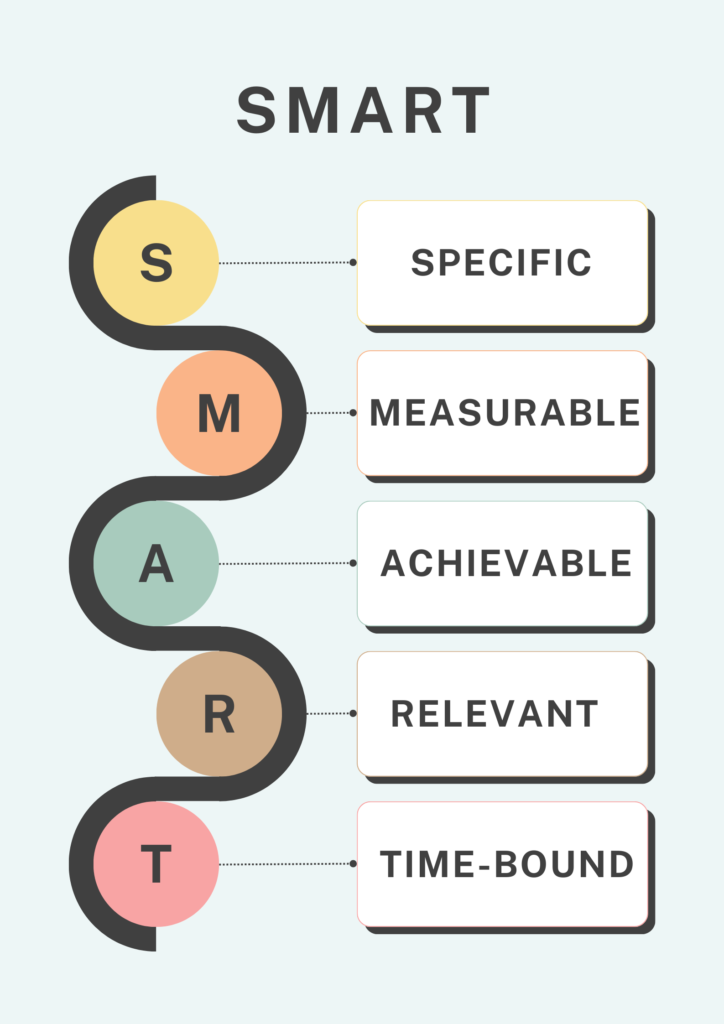Understanding Intermediate and Vocational Courses
In today’s rapidly evolving job market, education is no longer a one-size-fits-all approach. Students and professionals alike are exploring diverse educational pathways to equip themselves with the skills needed for their desired careers. Among these pathways, intermediate and vocational courses have gained prominence. But what exactly do these terms mean, and how do they differ from traditional academic routes? This blog post will delve into the definitions of intermediate courses and vocational training, their significance in modern education, and how they can shape career trajectories.

What are Intermediate Courses?
Intermediate courses serve as a bridge between foundational education and advanced studies. Typically, these courses cater to students who have completed their secondary education and are looking to further their knowledge before diving into specialized fields. These programs often cover a broad range of subjects, providing a well-rounded educational experience.
The term “intermediate” implies that these courses are not merely introductory; rather, they are designed to deepen understanding and prepare students for either higher education or specific vocational training. They may include subjects like science, humanities, or technology, offering a mix of theoretical knowledge and practical skills.
What is Vocational Training?
Vocational training, on the other hand, is more specialized and focused directly on equipping students with the skills necessary for specific careers. Unlike traditional academic education, which often emphasizes theory and broad knowledge, vocational courses are hands-on and geared towards practical applications.
These programs can vary in length and complexity, ranging from short courses to comprehensive training that spans several years. Fields such as plumbing, electrical work, culinary arts, healthcare, and information technology frequently utilize vocational training to prepare students for immediate employment in their chosen industries.
Click Here to get a list of Vocational Courses in Telangana
Educational Pathways: Academic vs. Vocational
The distinction between academic and vocational pathways is essential for students and parents to understand when considering future educational options.
- Academic Pathways:
- Often involve university or college degrees.
- Focus on theoretical knowledge and critical thinking.
- Graduates may pursue careers in fields such as research, education, or management.
- Vocational Pathways:
- Emphasize practical skills and hands-on experience.
- Typically lead directly to employment opportunities in specific trades or professions.
- Graduates are often ready to enter the workforce with little additional training.
The Importance of Intermediate and Vocational Courses
Both intermediate and vocational courses play a vital role in today’s education system. They provide students with valuable options that can lead to fulfilling careers without necessarily requiring a four-year degree.
For students who may not excel in traditional academic settings or who prefer learning through doing, these courses offer an alternative path that respects their strengths and interests. Moreover, as industries evolve and the demand for skilled workers increases, vocational training becomes increasingly essential, ensuring that the workforce is equipped with the necessary skills to thrive in a competitive job market.
The Core Differences: Curriculum Focus and Learning Approach
When it comes to education, not all courses are created equal. The choice between academic and vocational training often boils down to two core elements: curriculum focus and learning approach. Understanding these differences can help students make informed decisions about their educational pathways and future careers. In this post, we will explore how curriculum comparisons between theoretical and practical learning reveal the strengths of each approach, as well as the distinctions between classroom education and hands-on experience.
Curriculum Comparison: Theoretical vs. Practical Learning
Theoretical Learning
In traditional academic settings, the curriculum is typically centered around theoretical knowledge. Subjects like mathematics, literature, and science are taught with an emphasis on concepts, frameworks, and critical thinking. This approach often aims to cultivate a deep understanding of a wide range of topics, preparing students for further academic pursuits or research-oriented careers.
- Focus Areas:
- Abstract concepts
- Analytical skills
- Research methodologies
- Critical thinking
Theoretical learning can be invaluable for those who wish to enter fields requiring extensive academic training, such as medicine, law, or academia itself. However, while it nurtures intellectual growth, it may not always translate directly into job-ready skills.
Practical Learning
Conversely, vocational training emphasizes practical learning. The curriculum is designed around real-world applications and job-specific skills. Students engage in hands-on activities, simulations, and projects that mimic the challenges they will face in their chosen careers.
- Focus Areas:
- Skill application
- Problem-solving in real scenarios
- Industry standards and practices
- Technical proficiencies
This practical approach is particularly beneficial for students who thrive in dynamic environments and prefer to learn by doing. It equips them with the tools and experience necessary to step directly into the workforce upon graduation.

Skill Development: Bridging Theory and Practice
Skill development is a critical component of both educational approaches, but the methods of cultivation vary significantly.
Academic Skills Development
In academic programs, skill development often involves:
- Research Projects: Encouraging independent inquiry and deep dives into subjects.
- Critical Analysis: Teaching students to evaluate and interpret complex information.
- Communication: Fostering the ability to articulate ideas clearly in both written and verbal formats.
While these skills are highly valuable, they may not always align directly with the immediate needs of employers seeking job-ready candidates.
Vocational Skills Development
Vocational training focuses on developing specific, transferable skills that are directly applicable in the workplace. This includes:
- Hands-On Training: Students learn by engaging in tasks that they will perform on the job.
- Certifications and Licensing: Many vocational programs provide qualifications that enhance employability.
- Industry Experience: Internships and apprenticeships offer students a taste of real-world work environments.
As a result, graduates from vocational programs often find themselves well-prepared to meet the demands of their chosen fields, equipped with the specific skills employers are seeking.
Classroom Education vs. Hands-On Experience
Classroom Education
In academic settings, classroom education tends to be more structured and lecture-based, with an emphasis on information dissemination. Students are often required to engage with complex theories and concepts in a formalized setting.
- Advantages:
- Comprehensive exposure to a wide array of subjects.
- Development of analytical and critical thinking skills.
- Preparation for advanced academic pursuits.
However, this approach may lack the immediacy of practical applications, potentially leaving some students feeling disconnected from the real-world implications of what they learn.
Hands-On Experience
In contrast, vocational training prioritizes hands-on experience, where learning occurs in labs, workshops, or field settings. This experiential approach enables students to:
- Apply Knowledge in Real-Time: Instantly putting learned concepts into practice.
- Receive Immediate Feedback: Engaging in activities allows for real-time assessment and improvement.
- Build Confidence: Mastering practical skills in a controlled environment fosters self-assurance.
This type of learning not only enhances skill acquisition but also helps students understand the relevance of their education to real-world scenarios.

Career Paths: Opportunities After Completing Each Course
As education evolves, the pathways that students can take after completing their courses have expanded significantly. Both intermediate and vocational courses offer unique career prospects, preparing individuals for diverse job opportunities and further educational pursuits. In this post, we’ll explore the career opportunities available after completing each type of course, examining job readiness, pathways to higher education, industry-specific skills, and employment opportunities.
Career Prospects After Intermediate Courses
Job Readiness
Intermediate courses often serve as a foundation for students seeking to further their education. While these courses may not lead directly to specific job roles, they equip students with essential skills and knowledge that enhance their employability.
- Skills Developed: Critical thinking, problem-solving, and a broad understanding of various subjects.
- Job Readiness: Graduates are often better prepared for higher education programs, which can lead to specialized careers.
Pathways to Higher Education
For many students, intermediate courses are stepping stones to higher education. Upon completion, they may choose to pursue:
- Associate Degrees: These can lead to entry-level positions in fields like healthcare, business, or technology.
- Bachelor’s Degrees: Many students transition to four-year universities, aiming for careers in research, education, or professional fields.
Employment Opportunities
While the immediate job prospects might be less direct compared to vocational training, intermediate courses can still open doors in various sectors, particularly in roles that require foundational skills. Graduates might find opportunities in:
- Administrative Support: Roles in offices that require organizational and communication skills.
- Customer Service: Positions in retail or service industries that value interpersonal abilities.
- Entry-Level Positions: Jobs that require basic understanding of specific fields, often leading to growth opportunities.
Career Prospects After Vocational Courses
Job Readiness
Vocational courses are designed with job readiness in mind. The hands-on training and industry-specific skills imparted during these programs prepare students to enter the workforce immediately.
- Skills Developed: Technical competencies, practical skills, and industry-specific knowledge.
- Job Readiness: Graduates often have the confidence and experience needed to secure employment quickly.
Industry-Specific Skills
One of the key advantages of vocational training is the development of specialized skills tailored to specific industries. Graduates can pursue careers in fields such as:
- Healthcare: Positions like medical assistants, dental hygienists, and nursing technicians.
- Skilled Trades: Jobs in plumbing, electrical work, HVAC, and construction.
- Technology: Roles such as web developers, IT support specialists, and network administrators.
These industry-specific skills are in high demand, often resulting in favorable job placement rates.
Employment Opportunities
Vocational training often leads to immediate employment opportunities, with many graduates finding jobs soon after completing their programs. Common career paths include:
- Trade Positions: Electricians, plumbers, carpenters, and mechanics, all of which are essential services with steady demand.
- Technical Roles: Jobs in information technology, healthcare, and manufacturing, where specialized knowledge is crucial.
- Service Industry Jobs: Positions in culinary arts, cosmetology, and hospitality that require specific skills learned in vocational training.
The Duration and Structure of Intermediate and Vocational Courses
As students navigate their educational options, understanding the duration and structure of intermediate and vocational courses is crucial for making informed decisions. Each type of course is designed to cater to different learning styles and career aspirations, and they come with distinct time commitments and program formats. In this post, we’ll explore the duration of these courses, structural differences, flexibility in learning schedules, and the options for full-time and part-time study.
Course Duration
Intermediate Courses
The duration of intermediate courses typically varies based on the educational system and the specific program. Generally, these courses can range from:
- 1 to 2 Years: Many intermediate programs, particularly those designed for high school graduates, often last about one to two years. This timeframe allows students to build foundational knowledge and skills before advancing to higher education.
Vocational Courses
Vocational courses can vary widely in duration depending on the field of study and the complexity of the skills being taught. Common timeframes include:
- Short Courses: Some vocational programs can be as short as a few weeks to a few months, particularly for certifications in areas like culinary arts or IT.
- 1 to 2 Years: Many vocational programs last one to two years, providing comprehensive training in trades such as plumbing, electrical work, or healthcare.
- Longer Programs: Certain specialized vocational training may extend to three years or more, especially in fields requiring extensive hands-on experience or licensing.
Program Structure Differences
Intermediate Courses
Intermediate courses often have a more traditional academic structure, including:
- Classroom-Based Learning: A significant portion of the curriculum is delivered through lectures and classroom activities, focusing on theory and broad subject knowledge.
- Assessments: These may include exams, projects, and presentations to evaluate understanding and analytical skills.
- Diverse Subject Offerings: Students often have the flexibility to choose electives alongside core subjects, allowing them to explore various fields of interest.
Vocational Courses
Vocational courses tend to be structured around practical, hands-on training, with key elements such as:
- Practical Training: A significant emphasis is placed on experiential learning, with students engaging in workshops, labs, and real-world simulations.
- Industry Partnerships: Many programs collaborate with local businesses, offering internships or apprenticeships that provide valuable on-the-job training.
- Focused Curriculum: The coursework is tailored to specific industries, equipping students with the skills and knowledge directly applicable to their chosen career paths.
Flexibility in Learning Schedules
Intermediate Courses
Many intermediate courses offer varying levels of flexibility, including:
- Full-Time Programs: Most intermediate courses are designed as full-time programs, requiring students to commit to a regular class schedule.
- Part-Time Options: Some institutions may offer part-time study options, allowing students to balance their education with work or other commitments, though this may extend the duration of the program.
Vocational Courses
Vocational programs often provide more flexible learning options, including:
- Full-Time and Part-Time Study: Students can choose between full-time and part-time options, making vocational training accessible for those who need to work while studying.
- Evening and Weekend Classes: Many vocational schools offer classes outside of traditional hours, accommodating students with jobs or other responsibilities.
- Online Learning: An increasing number of vocational courses are being offered online, allowing for even greater flexibility in scheduling and learning pace.
The Financial Aspect: Costs Associated with Each Course Type
When considering educational pathways, the financial implications are a crucial factor for students and their families. Understanding the costs associated with intermediate and vocational courses can help in making informed decisions about the best investment for one’s future. This post will explore the tuition fees associated with each course type, available financial aid options, and the return on investment (ROI) in education.
Tuition Fees Comparison
Intermediate Courses
The tuition fees for intermediate courses can vary widely based on several factors, including the institution, location, and program length. On average:
- Public Institutions: Intermediate courses at public colleges or community colleges often have lower tuition rates, ranging from $2,000 to $5,000 per year.
- Private Institutions: Private colleges may charge higher fees, typically between $10,000 and $20,000 annually, depending on the prestige and resources of the institution.
While the costs can be significant, intermediate courses often provide students with a pathway to higher degrees, which can lead to increased earning potential over time.
Vocational Courses
Vocational course costs can also vary, but they generally tend to be more affordable than traditional academic programs. Typical tuition fees include:
- Short Courses: For certification programs that last a few weeks to a few months, costs can range from $500 to $3,000.
- Comprehensive Programs: More extensive vocational training programs lasting one to two years may cost between $5,000 and $15,000. Some specialized programs, particularly in healthcare or technology, may be on the higher end.
The relatively lower costs associated with vocational training can make these programs an attractive option for those looking to enter the workforce quickly.
Return on Investment in Education
Intermediate Courses
The ROI for intermediate courses can be significant, particularly if students continue their education and earn a bachelor’s degree or higher. Factors influencing ROI include:
- Higher Earning Potential: Graduates with higher degrees typically enjoy better job prospects and higher salaries. According to various studies, individuals with a bachelor’s degree earn substantially more over their lifetimes compared to those with only a high school diploma.
- Career Advancement: Intermediate courses can lead to qualifications that open doors to more advanced positions, further enhancing long-term earning potential.
Vocational Courses
The ROI for vocational courses is often appealing due to their shorter duration and lower costs:
- Quick Entry into the Workforce: Graduates often find jobs shortly after completing their training, leading to a faster return on their investment.
- High Demand for Skills: Many vocational fields, such as healthcare, skilled trades, and technology, experience strong job demand, often resulting in competitive salaries and job stability.
In many cases, students can see a positive ROI within a few years of graduation, especially in high-demand vocational sectors.
Selecting the Right Course for Your Goals and Interests

Choosing the right educational path is a pivotal decision that can shape your career trajectory and personal fulfillment. With a multitude of options available, particularly between intermediate and vocational courses, it’s essential to assess your personal goals and interests thoroughly. This post will guide you through personal goals assessment, interest evaluation tools, and aligning your education with your career aspirations.
Personal Goals Assessment
Defining Your Goals
Before selecting a course, take time to reflect on your personal and professional goals. Consider asking yourself:
- What are my long-term career aspirations? Think about where you see yourself in five to ten years.
- What skills do I want to develop? Identify specific skills that are important for your desired career.
- What type of work environment do I prefer? Consider whether you thrive in hands-on roles, collaborative settings, or more independent environments.
Setting SMART Goals
Using the SMART criteria can help you create clear and actionable goals:
- Specific: Define your goals clearly (e.g., “I want to become a licensed electrician”).
- Measurable: Identify how you will measure success (e.g., “I will complete my training and pass the certification exam”).
- Achievable: Ensure your goals are realistic and attainable within your timeframe.
- Relevant: Align your goals with your interests and career aspirations.
- Time-bound: Set deadlines for achieving your goals to maintain motivation.

Aligning Education with Career Aspirations
Researching Course Options
Once you have assessed your goals and interests, begin researching potential courses:
- Course Content: Look into the curriculum to ensure it covers the skills and knowledge needed for your desired career path.
- Accreditation and Reputation: Consider the reputation of the institution offering the course and whether it is accredited, which can impact employment opportunities.
- Industry Connections: Programs that offer internships or partnerships with local businesses can provide valuable hands-on experience and networking opportunities.
Considering Flexibility and Format
Think about the structure and format of the courses you are considering:
- Full-Time vs. Part-Time: Assess your current commitments and determine whether a full-time or part-time course would be more suitable.
- Online vs. In-Person: Evaluate your learning preferences—some students thrive in online settings, while others benefit from the structure of in-person classes.
Seeking Guidance
Don’t hesitate to reach out for support during your decision-making process:
- Academic Advisors: Advisors can provide valuable insights and help you navigate course options based on your goals.
- Mentors and Professionals: Connecting with individuals in your desired field can provide real-world perspectives on the education and skills needed for success.
Make an Informed Decision on Your Educational Journey Today!
Choosing the right educational pathway is one of the most significant decisions you will make, impacting both your career and personal fulfillment. Whether you’re considering intermediate courses or vocational training, the key is to approach this decision thoughtfully and strategically.
By assessing your personal goals, evaluating your interests, and exploring the various options available, you can align your education with your career aspirations. Understanding the financial implications, duration, structure, and job readiness of each course type will further empower you to make an informed choice.
Remember, this journey is uniquely yours. Embrace the exploration, seek guidance from mentors and advisors, and take the time to reflect on what truly resonates with you. The right educational path can open doors to exciting opportunities and lead you toward a rewarding career.
Take the first step today—invest in yourself, and shape your future with confidence!
To know more about Intermediate and Vocational courses, refer the below video.
Want to know more?
know how to choose the right stream after 10th grade
Author: Samuel Poluri
Date: 13, Oct 2024







